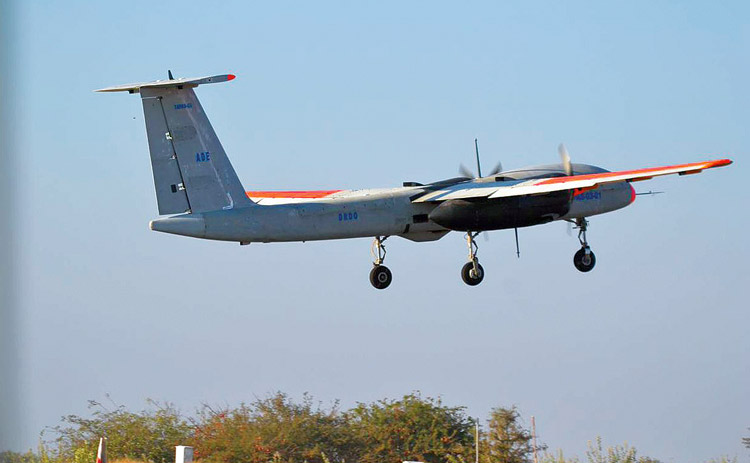- Prime Minister Narendra Modi inaugurates Aero India 2023 in Bengaluru; Releases Commemorative Stamp
- Defence Secretary meets delegations from Saudi Arabia, USA and Oman on the sidelines of Aero India 2023
- Foreign Ministers of 32 countries to attend Aero India 2023
- Embraer showcases the C-390 Millennium at Aero India 2023
DRDO - spearheading indigenisation

Defence Research and Development Organisation (DRDO) was created to make India self-reliant in defence. Since establishment, its story has been a checkered one. Off late, DRDO has been making its mark with the success of the ongoing trials of the under development 155mm/52 calibre Advanced Towed Artillery Gun (ATGM) which is in partnership with Bharat Forge and Tata Power SED.
On February 25, DRDO successfully flew its Rustom 2, a medium altitude long-endurance (MALE) unmanned aerial vehicle (UAV), at its Aeronautical Test Range (ATR) at Chalakere at Chitradurga. This was the first flight in user configuration with higher power engine. With an endurance of 24 hours, the drone will carry out surveillance and reconnaissance (ISR) roles for the armed forces. The payload of the UAV will include synthetic aperture radar, electronic intelligence systems and situational awareness payloads.
Three days later, much awaited anti-tank guided missiles (ATGM) NAG was successfully test fired in desert conditions against two tank targets at different ranges and timings. With this, DRDO declared completion of the developmental trials of the missile and “it is now ready for induction.” This is was the follow up of tests conducted in September last year. Working towards making India self reliant in missiles, DRDO in recent times has achieved many a success.
In November, 2017, India’s first indigenously designed and developed long-range sub-sonic cruise missile Nirbhaya was successfully test fired from the Integrated Test Range (ITR), Chandipur, Odisha. “The missile has the capability to loiter and cruise at 0.7 Mach, at altitudes as low as 100 metres. The missile majestically cruised for total time duration of 50 minutes, achieving the range of 647 km,” a statement informed.
DRDO has also been able to extend the range of its Pinaka multi-barrel rockets and convert them into a precision strike weapons.





